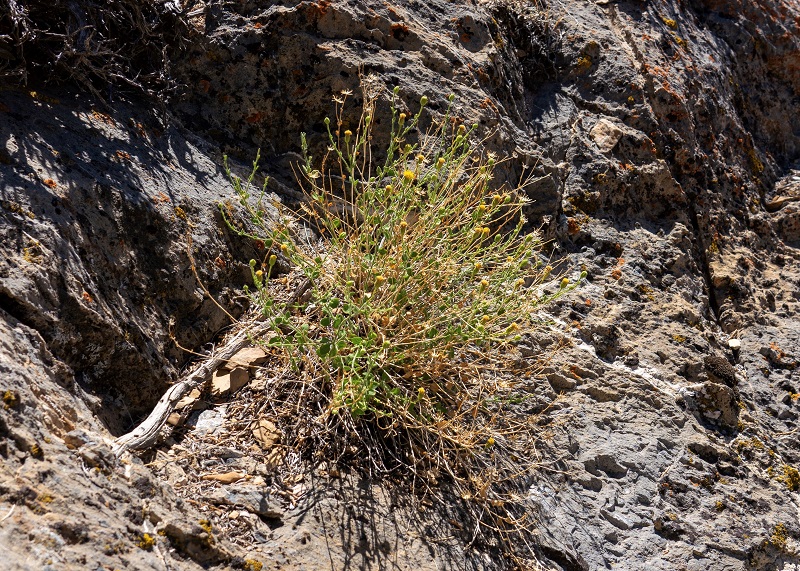
Photo Credit: Kristi Lazar, CDFW
The California Department of Fish and Wildlife (CDFW) will be conducting a status review for the Inyo rock daisy (Perityle inyoensis) to inform the California Fish and Game Commission's decision on whether to list the species under the California Endangered Species Act (CESA). More details about the listing proposal and CDFW's request for public comments may be found in our CDFW newsletter. As part of this process, the CNDDB would like to encourage anyone who has observed Inyo rock daisy to submit their findings to us. People who have questions or comments about the review process should email our Native Plant Program. The deadline for both data submission and comments is December 1, 2022 to allow us sufficient time for evaluation.
Inyo rock daisy is a perennial subshrub in the sunflower family that is endemic to the high elevation areas (2,019-2,774 m/6,623-9,100 ft) of the southern Inyo Mountains of Inyo County, California. It is restricted to rock outcrops high in calcium carbonate in pinyon woodlands, Joshua tree woodlands, and sagebrush shrublands. Inyo rock daisy is known from 26 occurrences with a global population estimate in the low thousands. The main threat to Inyo rock daisy is modification and/or destruction of habitat due to mineral exploration and mining activities. Other potential threats include invasive plant species, climate change, small population size, and tourism related to the development of the Cerro Gordo ghost town.
As of September 2, 2022, the Inyo rock daisy is considered a candidate species under CESA and will therefore receive the same legal protection afforded to an endangered or threatened species. Take of this species is prohibited without an appropriate permit for scientific, educational or management purposes. For more information on permitting, visit our CESA permits web page.
We need your help in better understanding the status of the Inyo rock daisy. If you have ever found them in the wild, submit your findings to us through our Online Field Survey Form. Together, we can help the Fish and Game Commission make an informed decision on the listing proposal for the Inyo rock daisy.